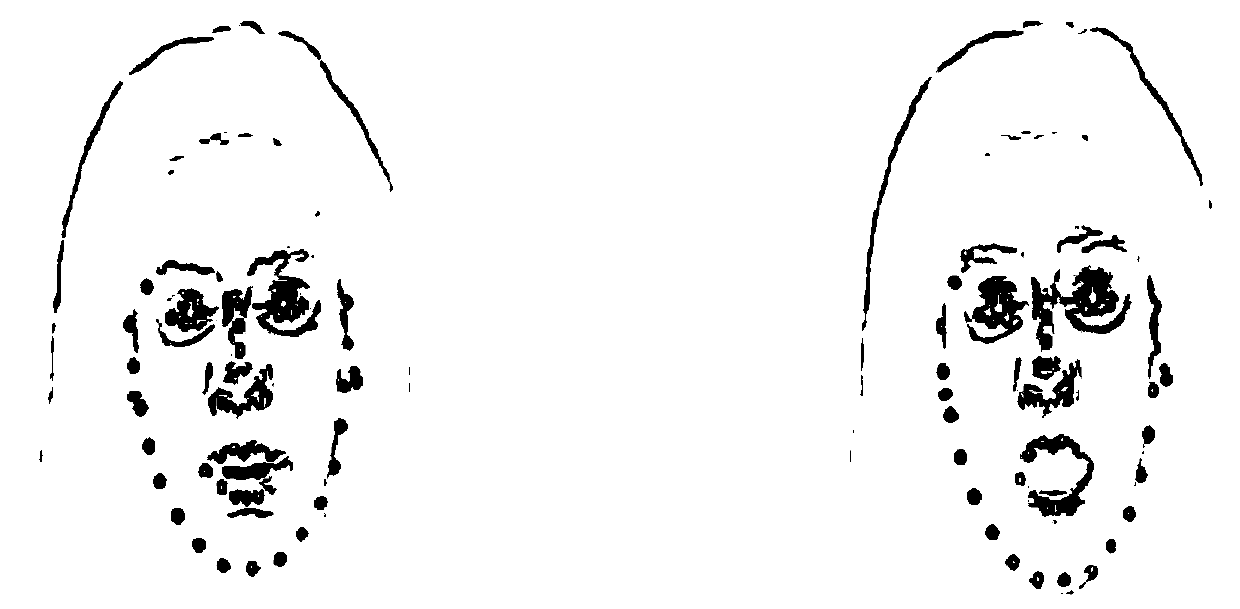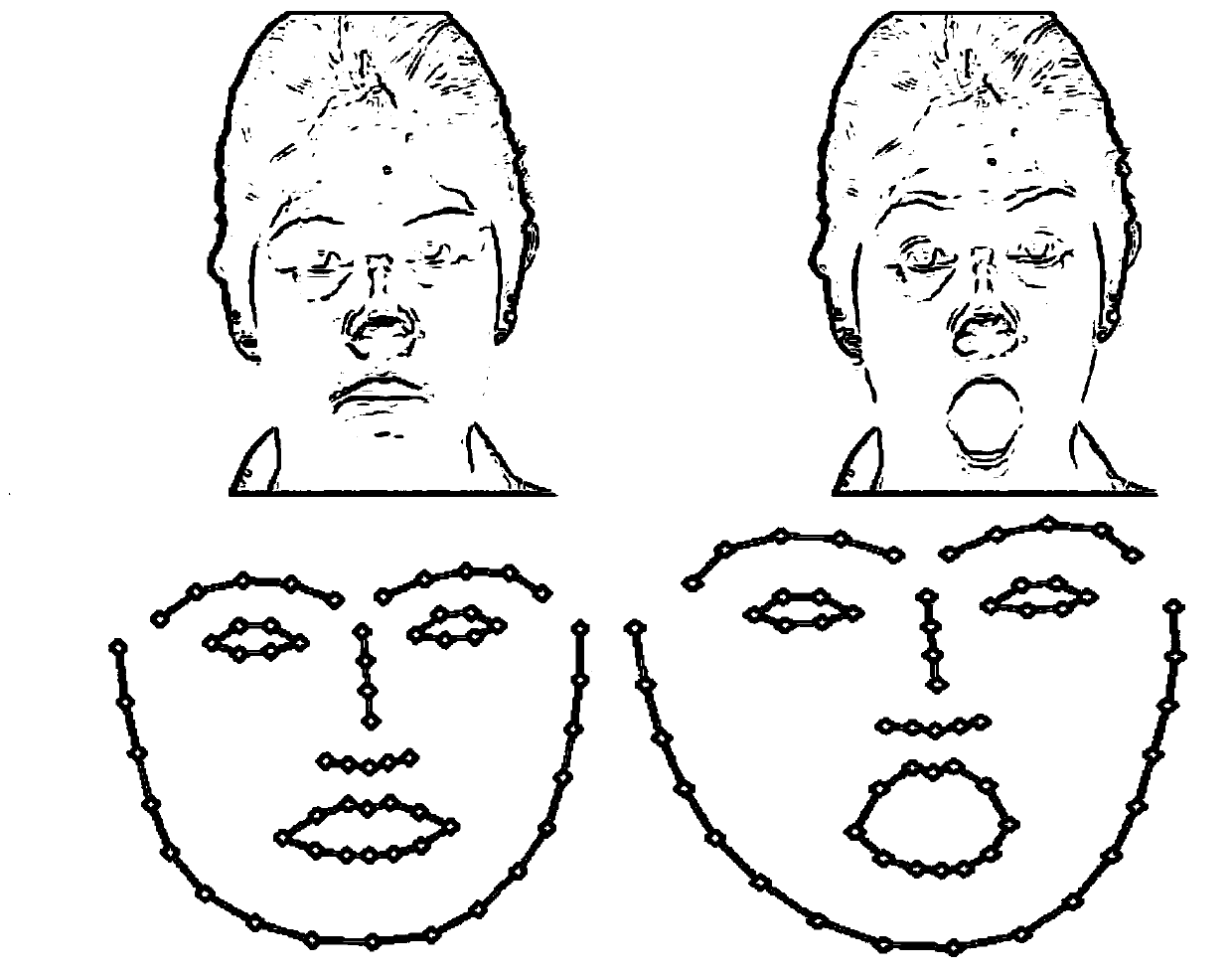Dynamic Facial Expression Recognition Method
A technology for facial expression recognition and facial expression, which is applied in the field of image features or characteristics of graphics, and can solve problems such as being easily affected by light, affecting the recognition rate of facial expressions, and high feature dimension and time complexity
- Summary
- Abstract
- Description
- Claims
- Application Information
AI Technical Summary
Problems solved by technology
Method used
Image
Examples
Embodiment 1
[0112] A kind of dynamic facial expression recognition method based on geometric features and semantic features of the present embodiment, the specific steps are as follows:
[0113] The first step is the preprocessing of the dynamic face image sequence:
[0114] First normalize the size of each frame of facial expression images in the input dynamic face image sequence to a size of 640×480 pixels, and then use the following Equation (1) is converted from RGB space to grayscale space, and each frame of facial expression grayscale image I is obtained gray_tn ,
[0115] I gray_tn =0.299I R +0.587I G +0.114I B (1),
[0116] In formula (1), I R , I G , I B They are the three channel components of red, green and blue of each frame of facial expression image in the input dynamic facial image sequence, and keep each frame of facial expression grayscale image I gray_tn , for facial expression frame detection and feature point labeling in the second step below;
[0117] In t...
Embodiment 2
[0221] This embodiment is an experimental verification of the dynamic facial expression recognition method of the present invention.
[0222] A. Select 262 dynamic face image sequences in the CK+ data set. Each dynamic face image sequence contains 2 images, namely neutral frame and peak frame, and a total of 524 facial expression image frames are used for experiments.
[0223]In the CK+ data set, the geometric feature extraction method TGF and the geometric semantic feature extraction method SA-TGF in the present invention, the recognition rate obtained after the ten-fold cross-validation experiment is compared with the literature 1, literature 2, literature 3, and literature in the background technology. The recognition rate comparison in 4 is shown in Table 17:
[0224] Table 17. Comparison of recognition rates on CK+ dataset
[0225]
[0226] B. Select 208 dynamic face image sequences in the MMI data set, each dynamic face image sequence contains 2 images, namely the ne...
PUM
 Login to View More
Login to View More Abstract
Description
Claims
Application Information
 Login to View More
Login to View More - R&D
- Intellectual Property
- Life Sciences
- Materials
- Tech Scout
- Unparalleled Data Quality
- Higher Quality Content
- 60% Fewer Hallucinations
Browse by: Latest US Patents, China's latest patents, Technical Efficacy Thesaurus, Application Domain, Technology Topic, Popular Technical Reports.
© 2025 PatSnap. All rights reserved.Legal|Privacy policy|Modern Slavery Act Transparency Statement|Sitemap|About US| Contact US: help@patsnap.com



